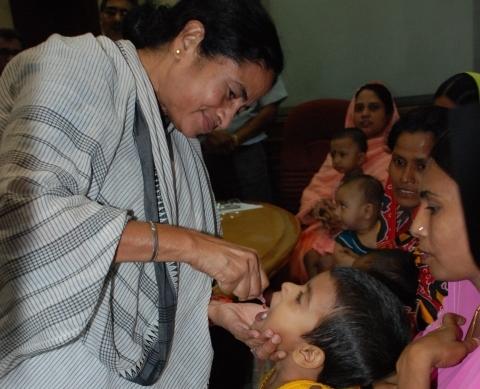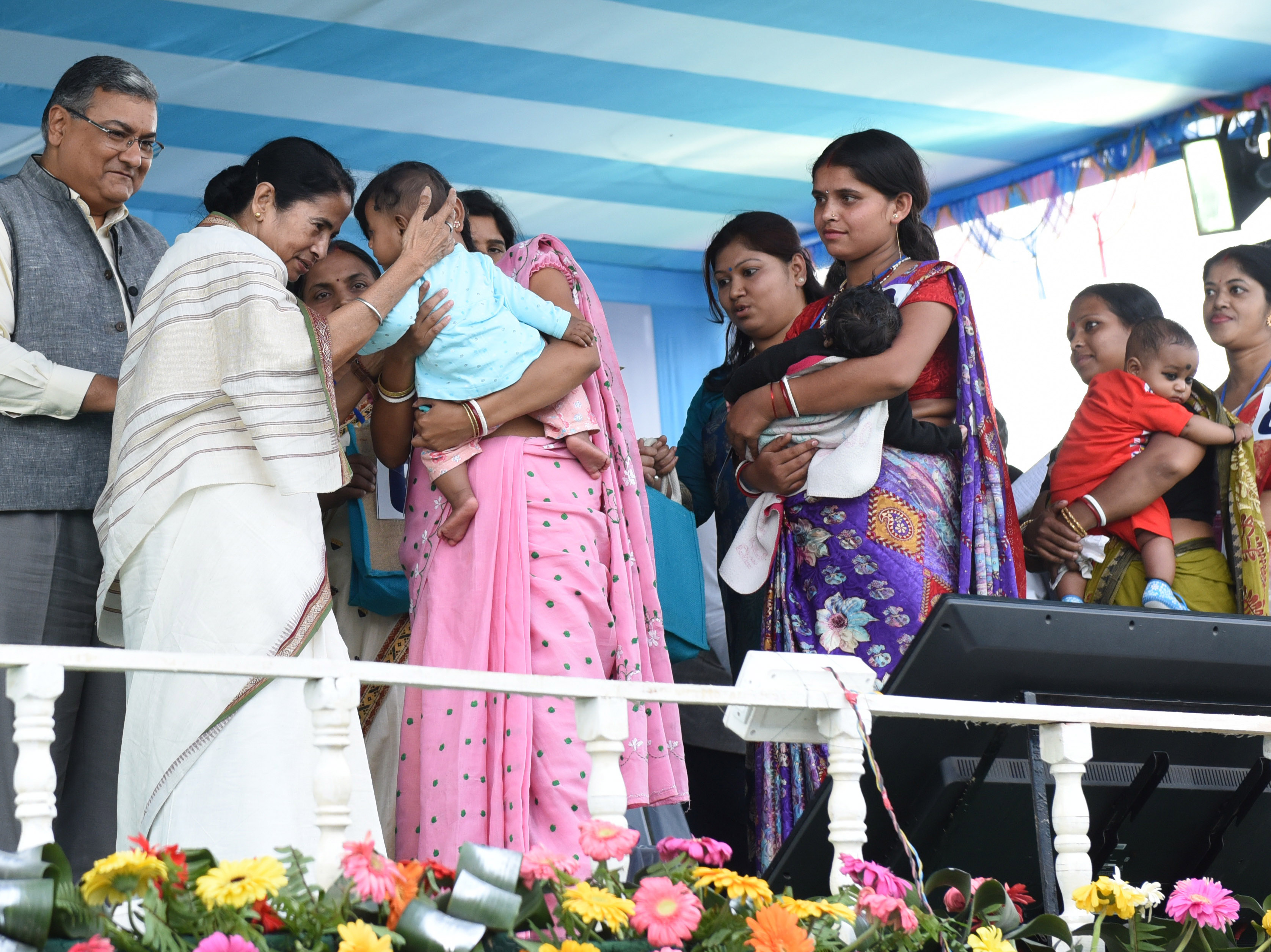Health has been one of the primary concerns of Chief Minister Mamata Banerjee ever since coming to power, so much so that she herself holds the Cabinet portfolio for the Health Department.
Soon after coming to power, she had instituted a task force to bring down the infant mortality rate (IMR) of Bengal, a move which has delivered significant results over the last six years. From 31 in 2011, when the Trinamool Congress came to power, the IMR came down to 26 in December 2016.
And now, as per the latest report of the Union Health Ministry, the number has further come down to 25. This was conveyed during the recently-held ‘Best Practices and Innovation in Public Health Service’ seminar.
The improved IMR number is primarily because of three reasons:
Higher number of institutional deliveries;
Setting up of new sick newborn care units (SNCU) in districts;
Significant improvement in the nutritional input for new mothers.
With respect to SNCU, the number of doctors and nurses trained in operating these has also been significantly improved. On the other hand, ASHA health workers are helping in bringing news about pregnant mothers and sick children to doctors and conveying back their advice, and also helping in bringing sick children (as well as mothers) immediately to the nearest health centres or hospitals on government-registered Matri Jaans and Nishchay Jaans, and if required, getting them admitted to SNCUs.
ASHA and aanganwadi workers are also helping in convincing pregnant mothers to go for institutional deliveries instead of depending on quacks, especially in rural areas, as well as delivering nutritious food free of cost to new mothers.
সদ্যোজাত শিশুমৃত্যু হার কমে ২৫, জানাল কেন্দ্রীয় রিপোর্ট
স্বাস্থ্যক্ষেত্রে ফের জাতীয় স্তরে কামাল করল বাংলা। ক্ষমতায় এসেই আলাদা টাস্ক ফোর্স গঠন করেছিলেন মুখ্যমন্ত্রী মমতা বন্দ্যোপাধ্যায়। ফলও পেলেন হাতেনাতে।
২০১১ সালে রাজ্যে সদ্যোজাত শিশুমৃত্যুর হার ছিল ৩১। অর্থাৎ প্রতি এক হাজার প্রসবে সদ্যোজাত থেকে এক বছর বয়স পর্যন্ত ৩১টি বাচ্চার মৃত্যু হত। তৃণমূল জমানায় ধাপে ধাপে তা কমে হয় ২৮ এবং ২০১৬ সালের ডিসেম্বরে প্রকাশিত কেন্দ্রীয় রিপোর্ট অনুযায়ী হয়ে দাঁড়ায় ২৬। এই সেপ্টেম্বরে প্রকাশিত কেন্দ্রীয় রিপোর্ট শোনাল নতুন সুখবর। সদ্যোজাত শিশুমৃত্যুর হার বা ইনফ্যান্ট মর্টালিটি রেট আরও কমেছে বাংলায়। তা হয়ে দাঁড়িয়েছে ২৫। গ্রামবাংলায় এই হার ২৫, শহরাঞ্চলে ২২।
এর প্রধান কারণ তিনটি:
এক, পশ্চিমবঙ্গে প্রাতিষ্ঠানিক প্রসব বৃদ্ধি।
দুই, গুরুতর অসুস্থ সদ্যোজাত বাচ্চাদের জন্য হওয়া এসএনসিইউ বা সিক নিউ বর্ণ কেয়ার ইউনিট-এর সংখ্যা বৃদ্ধি।
তিন, মায়েদের সার্বিক পুষ্টির মান আগের থেকে ভালো হওয়া।
এসএনসিইউ-এর সংখ্যা বেড়ে যাওয়ায় এখন আগের থেকে অনেক বেশী যত্ন পাচ্ছে সদ্যোজাতরা। অধিকাংশ বড় মেডিক্যাল কলেজ হাসপাতালের এসএনসিইউ-তে এখন শ্বাসকষ্টের চিকিৎসায় সি প্যাপ, ভেন্টিলেটর ইত্যাদি যন্ত্র রয়েছে। প্রশিক্ষিত ডাক্তার ও নার্সের সংখ্যাও বেড়েছে।
এই সুফলের আরও কারণ হল আশা কর্মীদের মাধ্যমে আসন্নপ্রসবা মহিলাদের খবর জানা, ‘নিশ্চয় যান’ এর মাধ্যমে নিখরচায় অসুস্থ বাচ্চাকে নিয়ে দ্রুত হাসপাতালে চলে আসা এবং পরিকাঠামোগত উন্নতি। এখন বাচ্চা অসুস্থ হলে গ্রামবাংলাতেও মায়েরা তাকে বাড়িতে ফেলে রাখেন না। কাছাকাছি স্বাস্থ্যকেন্দ্রে নিয়ে আসেন।
প্রসঙ্গত, কিছুদিন আগেই ‘বেস্ট প্র্যাকটিসেস অ্যান্ড ইনোভেশনস ইন পাবলিক হেলথ সিস্টেম’ শীর্ষক জাতীয় সম্মেলনে শিশুমৃত্যুর হার দ্রুত কমানোর বিষয়ে রাজ্য সরকার উচ্চ প্রশংসিত হয়।
Source: Bartaman


